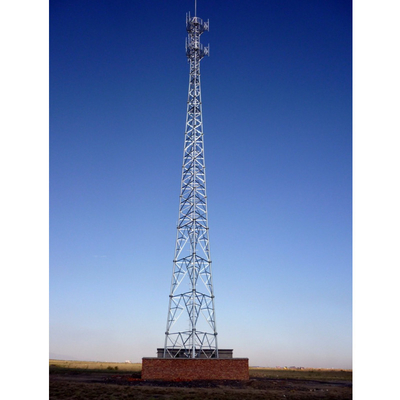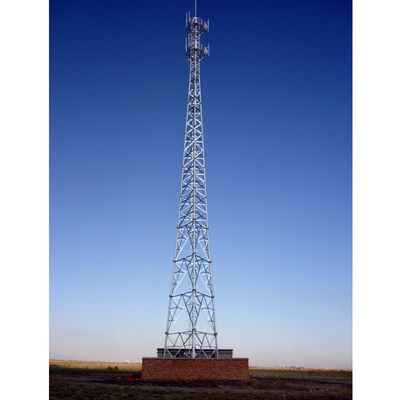-
Telecom Steel Tower
-
Transmission Steel Tower
-
Camouflaged Cell Towers
-
Galvanised Street Light Pole
-
Lattice Steel Towers
-
Solar Panel Support Structure
-
Galvanized Steel Structures
-
Traffic Signal Light Pole
-
Steel Tubular Pole
-
Rooftop Antenna Tower
-
High Mast Light Tower
-
Guyed Wire Towers
-
CCTV Camera Poles
4 Legs Tubular Lattice Telecom Steel Tower Against Earthquake

Contact me for free samples and coupons.
Whatsapp:0086 18588475571
Wechat: 0086 18588475571
Skype: sales10@aixton.com
If you have any concern, we provide 24-hour online help.
x| Product Name | 4 Legs Tubular Lattice Steel Telecom Tower Guangzhou | Steel Structure | HDG Lattice Steel Tower |
|---|---|---|---|
| Material | Steel Q355B(GB/T 1591) | Hot-dip Galvanization | ISO 1461 2009, ASTM A123 |
| Tension Strength (Mpa) | 360~510 | Design Wind Speed | 30/220kph |
| Tower Type | Self Standing Angular / Tubular | Connection Type | Parts For Connection Or Installation Will Be Provided |
| Design Of Pole | Against Earthquake Of 8 Grade | Warranty | 10 Years |
| Tower Lifespan | 50 Years | ||
| Highlight | Lattice Telecom Steel Tower,4 Legs Tubular Telecom Steel Tower,Telecom Steel Tower Against Earthquake |
||
4 Legs Tubular Lattice Steel Telecom Tower Guangzhou
Feature of telecom tower guangzhou:
Tubular Tower is kind of solid tube, which is slim for low visual impact and has high load carrying capabilities. Hollow tube is the strongest and lightest solution used for the tallest towers in the china. Freestanding towers or truss towers are generally larger at the bottom than the top but require a smaller footprint than a guyed structure.
Specification of telecom tower guangzhou:
| Material | Tubular Steel, Angle steel plates, Flat steel plate |
| Steel Type | Weldable low carbon structural steel |
| Steel Grade | GB Q235, Q345, BS 4360, ASTM A36 etc. |
| Yield Strength | Fy≥235MPa |
| Tensile Strength | Fu≥400MPa |
| Elongation | σ≥20% |
| Surface Finish | Hot dip galvanization |
| Galvanized layer | T≥65μm |
| Height | 20m to 100m, customized to requests |
| Design | 4 legs self-supporting or free standing lattice tower |
| Structure | 1 to 5 platforms, each platform comes with 4 to 6 brackets for mounting antennas or specified number of brackets for mounting antennas, microwaves, RRUs and other devices. |
| Supply mode | CKD(Complete Knocked Down), SKD(Semi-Knocked Down), DKD(Direct Knocked Down) |
| Fixing/Fastening | Bolts and nuts, connecting plates |
| Configuration | Foundations/anchoring bolts, tower sections, 1-5 platforms (optional), mounting brackets, ladder, anti-fall safety system, lightning rod, earthing plate etc. |
| Wind Load | 0.35-1.0kN/sqm |
| Lifespan | 20-50 years |
| Warranty | 5 years |
| Applications | GSM/3G/4G/5G/FM radio antennas, microwaves, telecom stations. |
The basic characteristics of the communications tower:
a) The angle steel communication tower is the most common tower type and is generally applied to self-supporting towers. The main material and the abdominal rod are mainly made of angle steel. It is easy to install, economical and applicable. It should be the first choice for the construction of iron towers.
b) The steel tube communication tower is mainly suitable for pull towers. Its main material is mainly made of steel pipe, because its root can be made very small, suitable for narrow sites or near the building, but the cost is higher than the angle steel Lattice tower.
c) The advantage of cable tower communication tower is that it has a small amount of steel, but it has a large area, and the maintenance workload is large in the future. Whether the economy should be considered comprehensively; the tower is vulnerable to damage by external forces; once the cable is damaged or soil erosion occurs at the anchor Loss of function of the anchor is caused by tower collapse: The steel Lattice tower is subject to wind force and it is prone to swing and horizontal twisting. The base station adopting microwave transmission is used with caution.
d) The sole management communication steel Lattice tower : The tube tower is a practical and novel iron tower. It has a beautiful exterior appearance, a small footprint, and a high cost performance. It is adopted by a large number of construction units. Disadvantage: The cost is higher than any of the following tower types because It is inconvenient for the tower feeders to lead and personnel to climb




